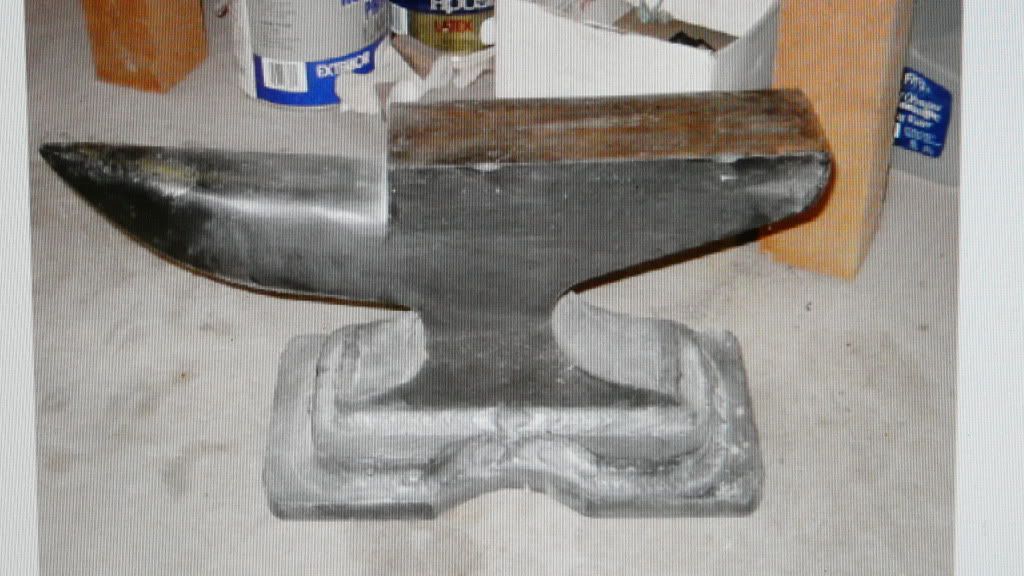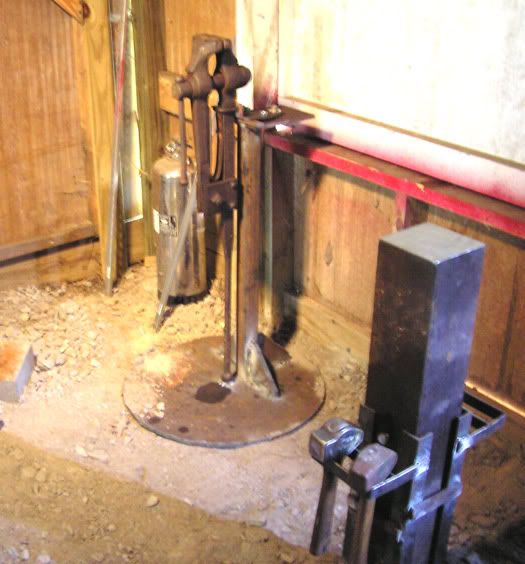you guys are just plain mean! :grin: :bow: I asked what I thought was a simple question n I got so many ideas runnen threw my knoggen now it hurts. This forum is the greatest, so much can be learned from so many it is awsome, thanks fellas for all the help n keep it coming
You are using an out of date browser. It may not display this or other websites correctly.
You should upgrade or use an alternative browser.
You should upgrade or use an alternative browser.
DIY Anvil?
- Thread starter Birdman
- Start date

Help Support Muzzleloading Forum:
This site may earn a commission from merchant affiliate
links, including eBay, Amazon, and others.
Guest
Depends on what your doing. I've tried welding anvils and makeshift anvils and they never worked just rite for me. I had issues with one cracking welds because of the high carbon face. At the time I didn't have the means to soften and then re-heat treat it. Also this was before I got a power hammer and forging press. The home built anvils didn't like me hammering on the work piece with a 10 pound sledge.
If you can find a Harbor Freight store that still has as Russian anvil or two get one. The take a bit of cleaning up and are not the hardest but there made from hardenable cast steel and have enough mass to do work. I managed to get two, one I left as a standard anvil, the other I cut the horn off and dressed as a finishing anvil. They bounced a ball bearing well enough for me not to worry about re heat treating. They have held up very well over the last few years. They stopped importing them a few years ago, but you can still find them now and then and there cheap. That said I'd kill to be able to get my hands on a 6"x12" piece of 1045 or 1050 about 10" long.
If you can find a Harbor Freight store that still has as Russian anvil or two get one. The take a bit of cleaning up and are not the hardest but there made from hardenable cast steel and have enough mass to do work. I managed to get two, one I left as a standard anvil, the other I cut the horn off and dressed as a finishing anvil. They bounced a ball bearing well enough for me not to worry about re heat treating. They have held up very well over the last few years. They stopped importing them a few years ago, but you can still find them now and then and there cheap. That said I'd kill to be able to get my hands on a 6"x12" piece of 1045 or 1050 about 10" long.
Guest
The Russian anvils are around a 100$ if you can find them. If your lucky you can find an old used one for around that price. I never could spend the money on a new quality anvil myself. Also for most of my work I need a square flat anvil, kinda like a bridge anvil or a Japanese bladesmith anvil.
If you don't need all the features of an anvil, and basically need a flat spot to hammer on, maybe a foot long-or-so piece of I-beam would work. Or, is the BOTTOM surface of the railroad track big enough and flat enough to suffice?
guys all these ideas n info have been awsome. I'm working on useing a piece of rr rail turned upside down n see how it works out. Working for the RR I have access to all sorts of pieces of rail, rail plates n asorted other metal. some of your ideas were off the charts kool n I'll also consider some of them. While all this has been going on I happened to talk with the guy across the street n he said his father(a farrier) has several old anvils in the 80lb range n he may be able to get me one of those. He said they all are in good condition n just sitting around in his dad's shop. Time will tell. Thanks again for all the help YMHS Birdman :hatsoff:
B'man,Here's one that might not work for a real blacksmith (no holes) but has worked well for me for about 25 or 30 yrs. I made it in a college welding shop back in the 80s. We made a bunch of them from 3 and 4" thick plate, cut them out with a torch, welded a piece of 1" cat blade on the top for a pounding surface, ground the horn to shape,welded some 1" plate to the bottom to make it stable. That cat blade is tough stuff. Weights about 150 lbs.

Deadeye

Deadeye
Brasilikilt
45 Cal.
- Joined
- Dec 13, 2005
- Messages
- 560
- Reaction score
- 1
Deadeye....WOW, that's a beautiful piece of work!
If ever you decide you want a hardy hole, it's not that difficult to weld a stout section of square tube to the *side* of the anvil...I've seen it done more than a few times and holds up if your welds penetrate deep enough.
If ever you decide you want a hardy hole, it's not that difficult to weld a stout section of square tube to the *side* of the anvil...I've seen it done more than a few times and holds up if your welds penetrate deep enough.
Deadeye said:B'man,Here's one that might not work for a real blacksmith (no holes) but has worked well for me for about 25 or 30 yrs. I made it in a college welding shop back in the 80s. We made a bunch of them from 3 and 4" thick plate, cut them out with a torch, welded a piece of 1" cat blade on the top for a pounding surface, ground the horn to shape,welded some 1" plate to the bottom to make it stable. That cat blade is tough stuff. Weights about 150 lbs.

Deadeye
YOU CAN TRY A NICE PIECE OR SLAB OF PINK GRANITE FOR AN ANVIL, MOST PLACES THAT CUT OR MAKE HEADSTONES HAVE PIECES.. THEY MAKE THE MOST AWESOME ANVIL YOU HAVE EVER TRIED..DEAD HIT SOLID..
A MACHINE SHOP WILL FLAT SURFACE THAT RAIL PIECE FOR ABOUT $10, IF YOU CAN GET THEM TO BUILD A PIECE OF HARDENED STEEL AND FIT IT TO IT, YOU HAVE AN AWESOME HAMMER SLAB THERE..
A MACHINE SHOP WILL FLAT SURFACE THAT RAIL PIECE FOR ABOUT $10, IF YOU CAN GET THEM TO BUILD A PIECE OF HARDENED STEEL AND FIT IT TO IT, YOU HAVE AN AWESOME HAMMER SLAB THERE..
Rasch Chronicles
32 Cal.
- Joined
- Sep 10, 2011
- Messages
- 20
- Reaction score
- 0
Hey fellows,
A lot of Viking reenactors use granite anvils. They work.
I might add that if you have a scrapyard nearby, you might can find yourself a good chunk of 4X4 to 8X8 steel. I've even obtained 3 inch thick pieces of 4140 plate. It will harden sufficiently to do smithing on. The trick is securing it to a sufficiently heavy object to allow it to be used properly.
What I am looking for is a chunk of 6X6 about a foot long. Get a tall Oak stump and mortice it into the stump. Should make a great anvil!
Your friend,
Albert “Matamoro” Rasch
The Rasch Outdoor Chroniclesâ„¢
ΜOΛΩΠΛΑΒΕ!
A lot of Viking reenactors use granite anvils. They work.
I might add that if you have a scrapyard nearby, you might can find yourself a good chunk of 4X4 to 8X8 steel. I've even obtained 3 inch thick pieces of 4140 plate. It will harden sufficiently to do smithing on. The trick is securing it to a sufficiently heavy object to allow it to be used properly.
What I am looking for is a chunk of 6X6 about a foot long. Get a tall Oak stump and mortice it into the stump. Should make a great anvil!
Your friend,
Albert “Matamoro” Rasch
The Rasch Outdoor Chroniclesâ„¢
ΜOΛΩΠΛΑΒΕ!
Thanks, Brazilikilt, good idea. What I'd like to do is find a place where the proper holes could be EDMed into the upper surface. I'm pretty sure it could be done that way but just haven't used it enough to hunt one down.
Deadeye
Deadeye
Similar threads
- Replies
- 3
- Views
- 245
- Replies
- 6
- Views
- 462
- Replies
- 95
- Views
- 4K




